The Intel Core i3-12300 Review: Quad-Core Alder Lake Shines
by Gavin Bonshor on March 3, 2022 8:30 AM ESTCPU Benchmark Performance: Simulation And Rendering
Simulation and Science have a lot of overlap in the benchmarking world, however for this distinction we’re separating into two segments mostly based on the utility of the resulting data. The benchmarks that fall under Science have a distinct use for the data they output – in our Simulation section, these act more like synthetics but at some level are still trying to simulate a given environment.
For the Core i3-12300, we are running DDR5 memory at the following settings:
- DDR5-4800(B) CL40
Simulation
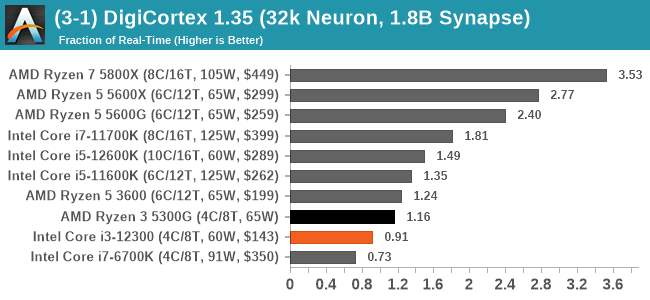

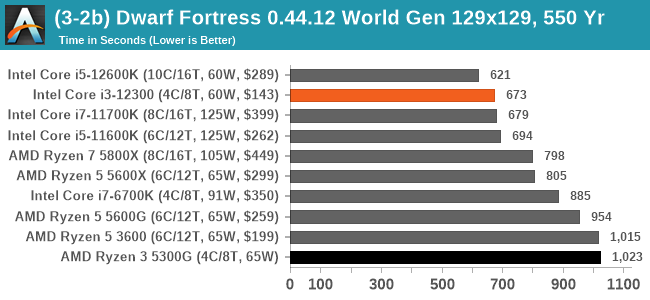


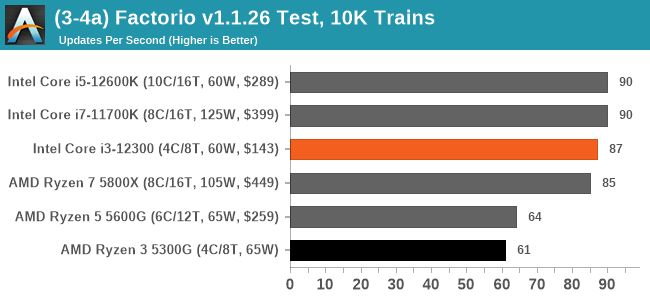
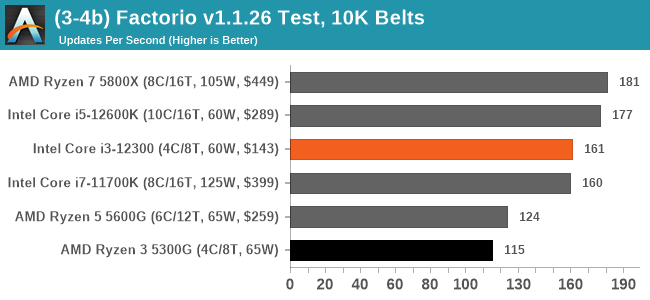
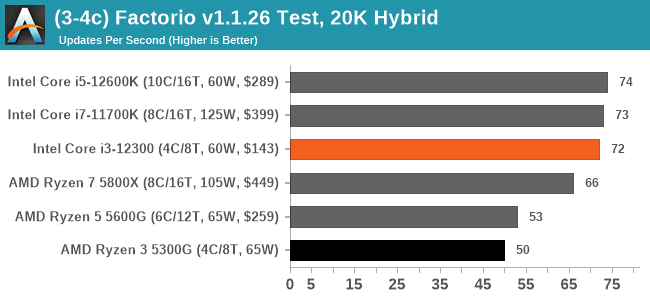
In tests that can utilize the higher IPC and lower core count, the Alder Lake i3 reigns supreme. The Core i3-12300 does struggle though in the tests that can really make use of a larger number of cores/threads.
Rendering
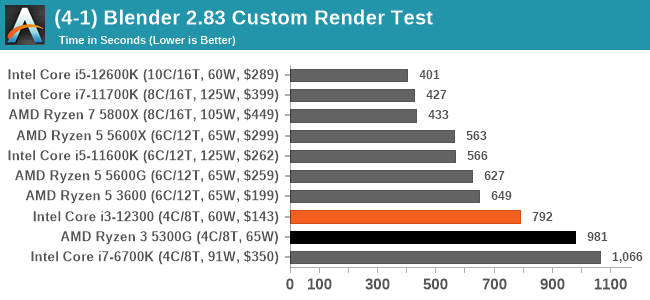
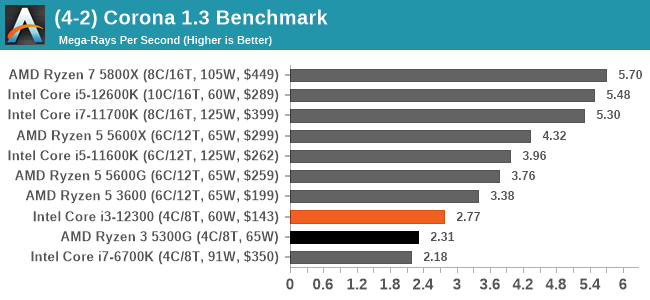
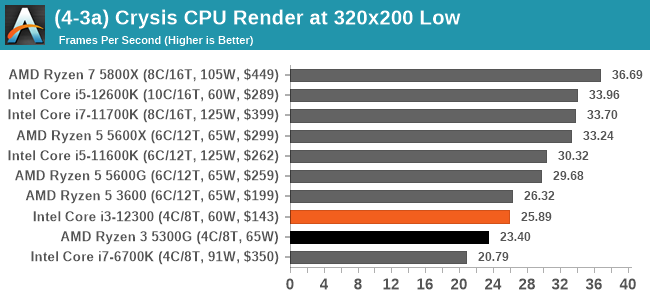
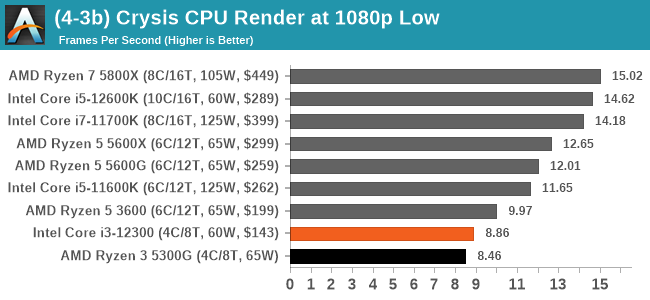
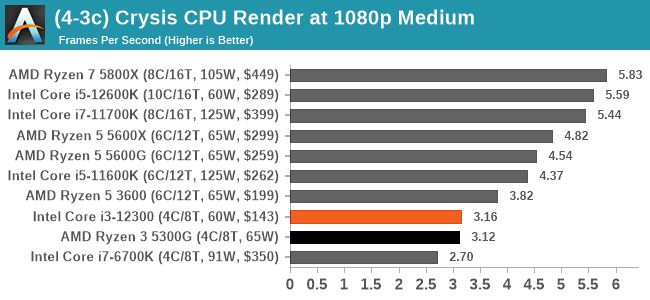
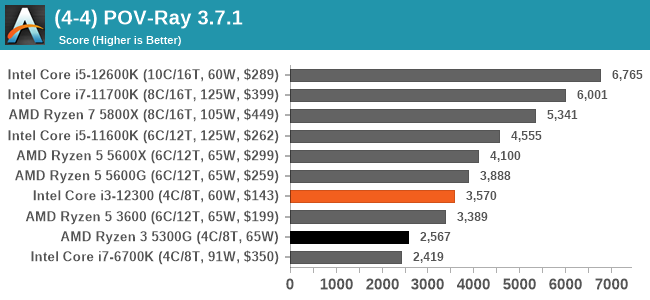
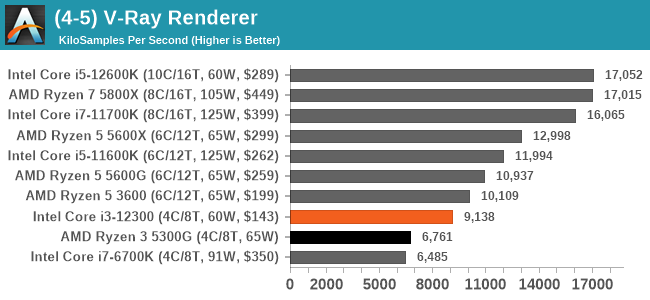
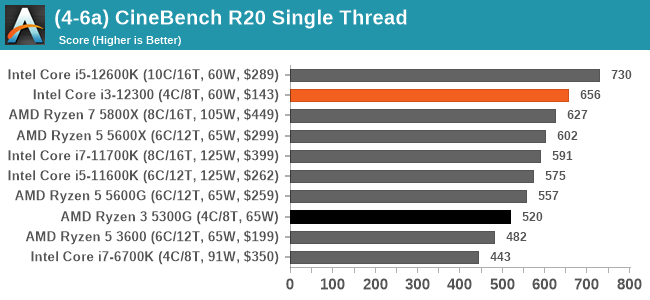
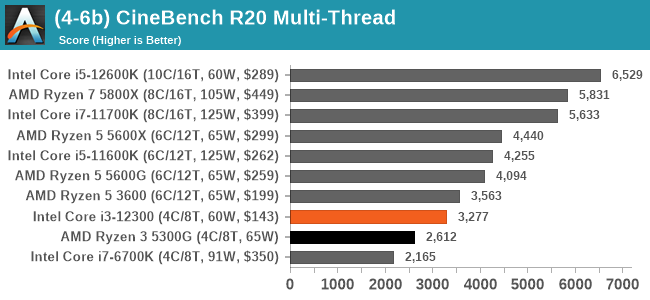
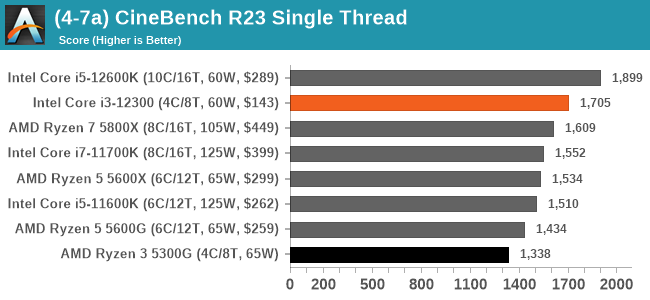
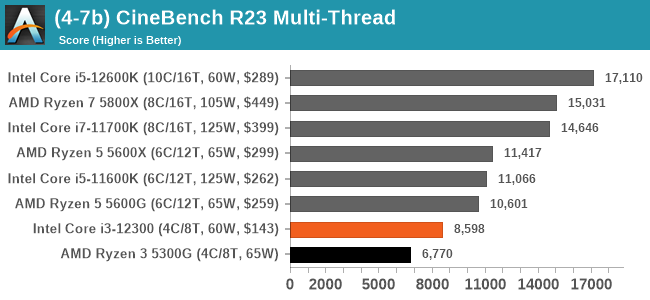
It's clear that the Core i3-12300 doesn't perform well in high core and thread situations such as rendering, although single-threaded performance is superb due to the Golden Cove-based P-cores.










140 Comments
View All Comments
Makaveli - Thursday, March 3, 2022 - link
DDR4-3200 CL22Don't know anyone using DDR4 with that high cas latency.
Going to CL14 memory will most likely remove the gap in gaming.
Oxford Guy - Thursday, March 3, 2022 - link
CL16 3200 RAM was cheap many many years ago and I have not heard of a single stability problem with any platform other than Zen 1, which was quite special.It’s preposterous to run 3200-speed RAM at anything slower than CL16.
mode_13h - Thursday, March 3, 2022 - link
Regarding the review:* Glad to see the DDR4 vs. DDR5 comparison.
* Sad to see DDR5 used for remainder of benchmarks, given current price & availability. People buying a sub-$150 CPU won't be using DDR5, making these benchmarks unrealistic.
* Sad to see minimal analysis of power consumption. I believe much of their advantage over the Ryzen R3 5300G comes from burning more power and DDR5, but without power measurements on individual benchmarks, we can't compute perf/W or make other conclusions about this.
* Glad to see the 5300G showing up, where it did.
* Glad to see the i7-6700K (and i7-2600K) sometimes making an appearance. So very interesting that a couple benchmarks showed the i7-6700K with roughly equal performance!
* On the last page, Turbo power is mistakenly stated as 69 W, although the first page chart correctly lists it as 89 W.
* Please ask Ian to open source his 3D Particle Movement benchmark, or stop using it. As the rest of your benchmarks are publicly available & independently verifiable, this is only fair.
Regarding the CPU:
* Definitely a performance bargain, if you can get it near list price!
* Sad to see ark.intel.com doesn't specify ECC support (which IMO means probably not... but check the docs of any LGA 1700 ECC-capable motherboard to be sure).
lmcd - Thursday, March 3, 2022 - link
Ironically DDR5 benchmarks can be used to get a sense of what using higher-speed DDR4 can unlock.Calin - Friday, March 4, 2022 - link
"Sad to see DDR5 used for remainder of benchmarks,"As a lower performance processor, DDR5 wouldn't bring too much to the table. They specify a 5-10% increase in performance with DDR5, with an average of some 6%.
So, basically nothing would change in the benchmarks - a 10% performance difference could easily be ignored for many other factors (price, availability, necessary power/cooling, ...)
mode_13h - Saturday, March 5, 2022 - link
> So, basically nothing would change in the benchmarks -> a 10% performance difference could easily be ignored
That's ridiculous. 10% is certainly significant. I would consider <= 1% to be down in the noise.
Calin - Monday, March 7, 2022 - link
3% used to be Anand's Anandtech "noise".I wouldn't care for a 10% - 25 seconds compile time down to 22... or editing images, 50 images to take 54 seconds instead of one minute.
That's the reason Intel used to compare new processors to 3 generations old ones (3-5 years old). The improvement over multiple generations grew to a nice 25% or more (at least in some benchmarks). But, if all you do takes seconds or minutes, that 10% reduction in time (or 10% increase in throughput) is almost never truly useful.
mode_13h - Tuesday, March 8, 2022 - link
> But, if all you do takes seconds or minutes, that 10% reduction in time> (or 10% increase in throughput) is almost never truly useful.
I'm not talking about upgrading for an absolute increase of 10%. However, 10% is a lot of error to stack with whatever else you're comparing against.
Either the accuracy of the benchmarks matters or it doesn't. If not, then obviously we don't need to bother about 10%. If it does, then 10% is too much to ignore.
Ryan Smith - Friday, March 4, 2022 - link
"Sad to see DDR5 used for remainder of benchmarks, given current price & availability. People buying a sub-$150 CPU won't be using DDR5, making these benchmarks unrealistic."Including the DDR4 vs. DDR5 numbers was our compromise, here. We're going to be using this dataset for a long time going forward; it didn't make much sense to base everything around DDR4, and thus unnecessarily kneecapping the CPU in current and future comparisons.
Alistair - Thursday, March 3, 2022 - link
I would like to point out that it has been five months already, still can not buy a single quad core CPU. Intel is teasing us with a good cheap product, but it doesn't actually exist. If and when it finally shows up, it will probably be overpriced (over $200 CAD?) so this product might as well not exist.